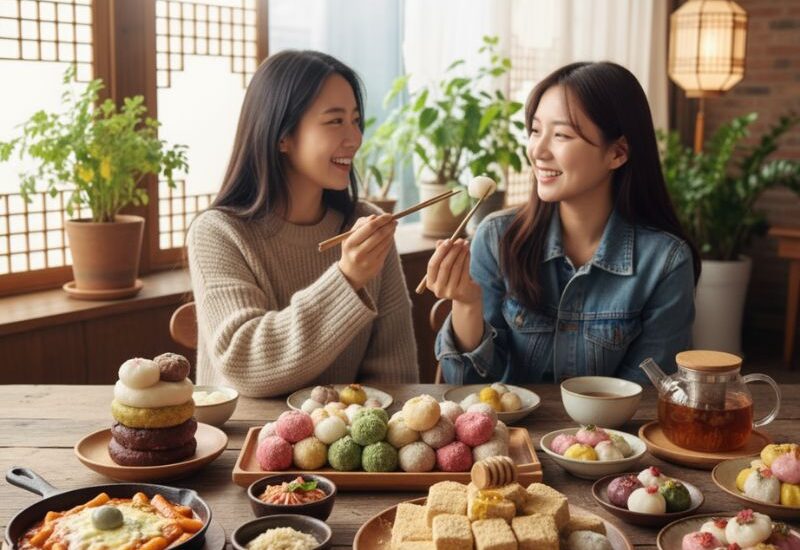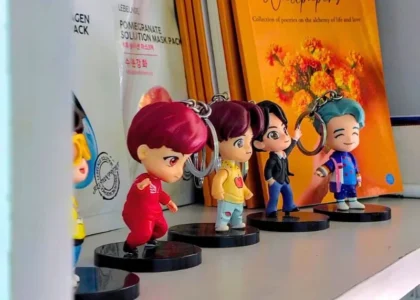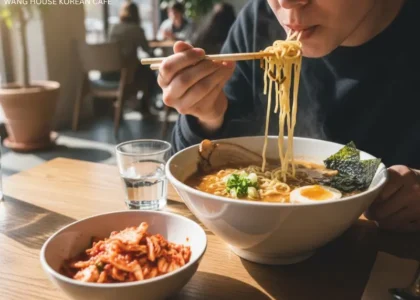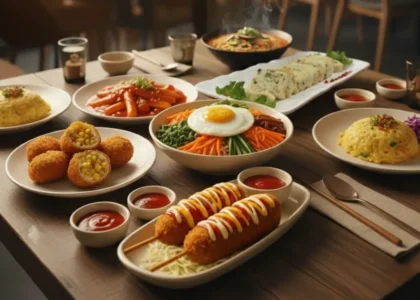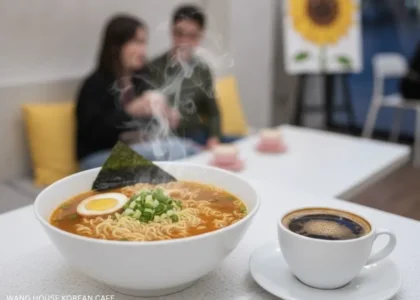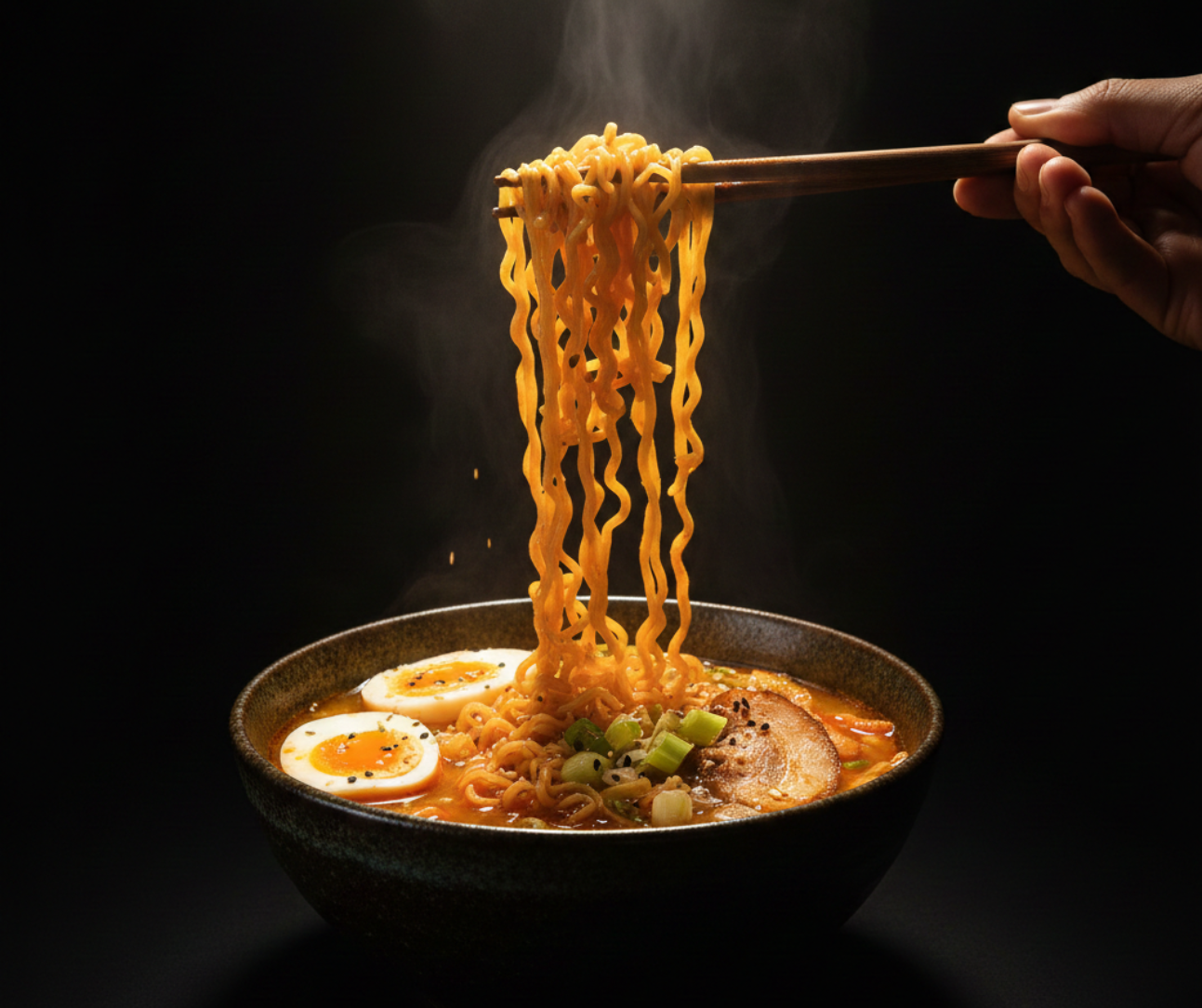Introduction
Korean Rice Cakes, or Tteok, stand as one of the most beloved and traditional desserts in Korean culture. Soft, chewy, and subtly sweet, these treats have become a favorite among K-food enthusiasts worldwide. Whether you’ve seen them in K-dramas or at trendy Korean cafes, Tteok captures the perfect balance of flavor, texture, and tradition. In India, especially at Wang House Korean Cafe, this authentic Korean delicacy is winning hearts one bite at a time.
What Exactly Are Korean Rice Cakes (Tteok)?
Tteok are traditional Korean sticky rice treats made from glutinous rice flour. The texture is soft and elastic, giving it a mochi-like chew. Unlike most Western desserts, Tteok are not overly sweet; instead, they rely on natural ingredients like sesame, red bean, honey, or matcha for flavor. These Mochi-style Korean snacks are enjoyed year-round and are especially popular during festivals and celebrations.
Across Korea, there are over a hundred types of Tteok, ranging from steamed to pounded or pan-fried variations. Some famous examples include Injeolmi (soybean-coated rice cake), Songpyeon (half-moon-shaped rice cake eaten during Chuseok), and Garaetteok (used for making Tteokbokki).
And while you’re browsing other options, you can explore our full Korean-street-food menu…
A Taste of Tradition – The Role of Tteok in Korean Culture
In Korean culture, Tteok is much more than a dessert. It represents joy, prosperity, and celebration. Families share Korean festival rice cakes during important events like birthdays, weddings, or the Lunar New Year. This sweet treat symbolizes good luck and togetherness.
At Wang House Korean Cafe, each piece of Tteok reflects this cultural essence. Prepared with care and authentic ingredients, their Tteok dessert ideas bring the warmth of Korean festivities right to your table in Delhi, Gurugram, or Kochi. Whether you’re new to Korean food or a regular at K-cafes, this dessert will surprise your taste buds.
Visit one of the Korean cafe locations to taste them in person…
Different Types of Korean Rice Cakes You Can Try
Here are some popular Tteok varieties that you might find at a Korean cafe like Wang House:
- Injeolmi (인절미) – A chewy rice cake covered in roasted soybean powder. This type of Korean sticky rice treat is nutty and mildly sweet.
- Songpyeon (송편) – Traditionally enjoyed during Chuseok, these half-moon Korean festival rice cakes are filled with sweet sesame or red bean paste.
- Garaetteok (가래떡) – Long white rice cakes used in savory dishes like Tteokbokki, but also served as simple sweet snacks.
- Baekseolgi (백설기) – A pure white steamed rice cake symbolizing purity and good fortune.
- Hwajeon (화전) – Flower-shaped Mochi-style Korean snacks made with rice flour and edible blossoms.
Each type of Tteok carries a story from Korea’s culinary history. The balance of color, shape, and softness makes them both beautiful and delicious.
Why Korean Rice Cakes Are So Popular Worldwide
The charm of Korean sticky rice treats lies in their simplicity. These desserts are light, gluten-free, and easy to enjoy any time of the day. They pair beautifully with tea, coffee, or even boba drinks — making them a perfect fit for modern Korean cafes like Wang House.
The chewy texture evokes memories of Japanese mochi, yet the flavor profile is distinctly different. That’s why food lovers searching for the best Korean cafe for mochi-style rice cakes often end up discovering Tteok for the first time and instantly fall in love.
Moreover, the use of natural colors—like green tea, black sesame, or pumpkin—adds to the visual appeal of these Korean festival rice cakes.
For more Korean food tips and culture, read our blog for Korean food tips & culture.
Modern Twists to Classic Tteok Dessert Ideas
While Tteok remains rooted in tradition, chefs today are giving it a creative makeover. You’ll find versions filled with chocolate, mango, or strawberry cream. Cafes in Seoul and Delhi have started experimenting with new Tteok dessert ideas like Tteok lattes or Tteok ice cream bowls.
At Wang House, these creative combinations are a must-try. Their chefs mix authentic Korean rice cake textures with flavors familiar to Indian palates, making it one of the best Korean cafes for mochi-style rice cakes in the region.
So, if you’re searching for where to try sweet Korean rice cakes in Delhi, Wang House Korean Cafe should be your first stop. The ambiance, music, and food together create a truly Korean experience.
Nutritional Benefits of Tteok (Korean Rice Cakes)
Many people don’t realize that Tteok can be a healthy dessert option. Since these Korean sticky rice treats are made from rice flour, they are naturally gluten-free. The low-fat content and minimal use of refined sugar make them lighter than most bakery sweets.
Traditional Tteok also contain plant-based proteins and fiber from beans or nuts. When paired with green tea, they can make for a wholesome snack. These qualities make Korean festival rice cakes a perfect treat for health-conscious dessert lovers.
Where to Try Sweet and Spicy Korean Rice Cakes in Delhi
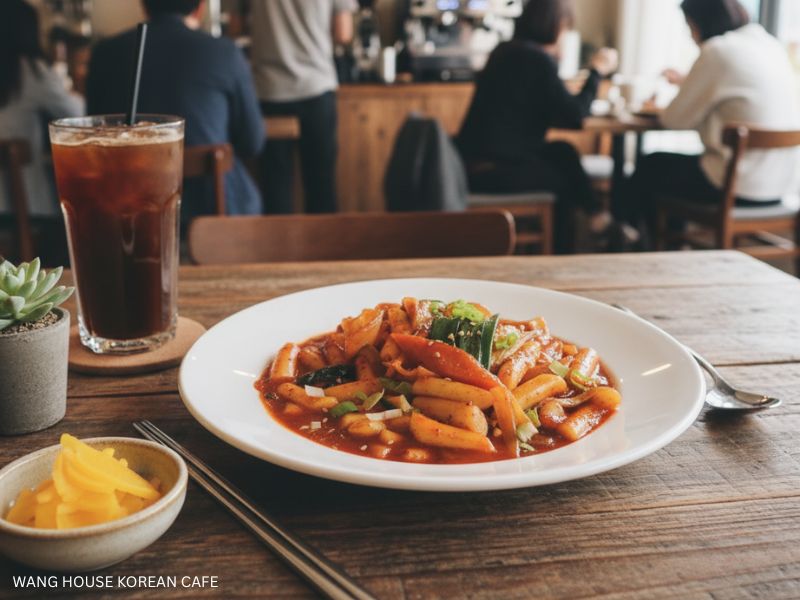
Delhi has seen a rising love for Korean cuisine — from ramen to fried chicken and now desserts like Tteok. If you’re curious where to try sweet and spicy Korean rice cakes in the form of Teokbokki and Rabokki in Delhi, visit Wang House Korean Cafe located in Laxmi Nagar, NSP (Pitampura), Gurugram, and Kochi.
Each outlet of Wang House offers a cozy, K-pop-inspired environment. Here, you can enjoy Mochi-style Korean snacks with refreshing bubble teas, ramen bowls, and authentic Korean street food. The combination of taste, presentation, and ambiance makes Wang House stand out as the best Korean cafe for mochi-style rice cakes in India.
Tips for Enjoying Korean Rice Cakes the Right Way
- Pair it with Tea or Coffee: The mild sweetness of Tteok pairs well with warm drinks. Try it with a latte or matcha tea.
- Eat Fresh: These Korean sticky rice treats are best enjoyed within a day or two.
- Try Different Textures: Some Tteok are steamed, others are pan-fried. Experiment to find your favorite.
- Don’t Skip the Fillings: Red bean, sesame, and honey fillings are traditional and full of flavor.
- Celebrate with It: Add Tteok to your celebrations for a Korean-style twist.
To book a table or ask about our Tteok selection, contact us for bookings or queries.
Conclusion
Korean Rice Cakes (Tteok) beautifully blend tradition and taste. From classic Injeolmi to modern mochi-style creations, every piece tells a story of Korean heritage. Whether you’re a fan of K-pop or just a food explorer, these Korean sticky rice treats will capture your heart.
If you love Korean flavours as much as we do, you can also franchise with Wang House and bring them closer to you.
So next time you’re craving something unique, stop by Wang House Korean Cafe — the best Korean cafe for mochi-style rice cakes and other K-desserts. If you’ve been wondering where to try sweet Korean rice cakes in Delhi, now you know the answer!
10 Relatable Questions & Answers
1. What are Korean Rice Cakes made of?
They’re made from glutinous rice flour, sometimes mixed with red beans, sesame, or honey for flavor.
2. Are Korean Rice Cakes similar to mochi?
Yes, both are chewy and sticky, but Tteok has a distinct Korean flavor and texture.
3. What is the most popular type of Tteok?
Injeolmi and Songpyeon are among the most loved Korean sticky rice treats.
4. Can I find Korean Rice Cakes in Delhi?
Absolutely! Visit Wang House Korean Cafe to enjoy authentic Tteokbokki and Rabokki.
5. Are Korean Rice Cakes healthy?
Yes. They’re gluten-free, low-fat, and use minimal sugar compared to other desserts.
6. How do you store Tteok?
Keep them in an airtight container at room temperature for a day or refrigerate for longer.
7. Can vegetarians eat Korean Rice Cakes?
Yes, most varieties are plant-based and suitable for vegetarians.
8. What’s the difference between Tteok and Tteokbokki?
Tteokbokki uses Garaetteok (a type of rice cake) in a spicy sauce, while Tteok is a sweet dessert.
9. What drinks go best with Korean Rice Cakes?
They pair wonderfully with green tea, bubble tea, or hot coffee.
10. Why are Korean Rice Cakes served at festivals?
They symbolize happiness, purity, and blessings in Korean culture.

